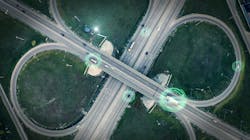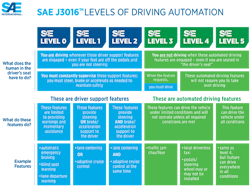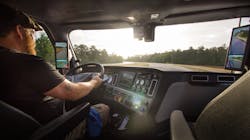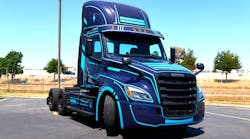Fleet execs hopeful, wary regarding autonomy and electrification
This is part two of a two-part series on how the proper equipment can help improve driver comfort and safety on the road. See part one for a discussion of collision mitigation, electronic stability control, lane-departure alerts, and camera systems.
HOT SPRINGS, Arkansas—While fleet executives here heartily endorsed a number of more established, more basic safety systems, complex—and currently expensive—new platforms such as truck autonomy and electrification still have some development ground to cover before they're highway ready.
The recent Arkansas Trucking Association 2021 Business Conference session featured John Culp, president, Maverick Transportation; Craig Harper, chief sustainability officer and executive vice president, J.B. Hunt Transport Services Inc.; and John Smith, president and CEO, FedEx Ground.
Autonomous vehicles
According to Harper, J.B. Hunt began looking into truck autonomy five years ago. "When we talked to people about it, you'd hear the phrase, 'not in our lifetime,'" he said. "That phrase has changed, and people can see that the technology is advancing."
Noting the different levels of vehicle automation, Harper suggested most companies are not interested in Level 3, where the vehicle can get itself from place to place, but an operator is still needed to take over in unusual circumstances. And studies have shown it takes from 15 to 30 seconds for the person doing something else in the vehicle to respond fully.
Instead, companies are looking for Level 4 capabilities, or vehicles that can perform independently within the "operational design domain," as Harper explained. That could be in a freight yard, or a city, and a certain highway lane.
Most critically, even if projections for autonomous vehicle adoption by 2035 are accurate, industry growth means trucking still will need more drivers than it does today, he added.
"That's important because we'll have a customer say, 'I don't know why you're talking about this driver situation, because autonomous trucks are going to come haul our freight,'" Harper said. "It isn't going to happen that way. And it's not going to jump up and surprise anybody. There are today probably 100 trucks that are autonomous trucks, and I think you will see some freight being hauled on the roads next year without a driver. But when will they be available to order? That's a whole different question."
"But 100 trucks is going to seem like 10,000 trucks because they get a lot of press," he added. "So if you are a driver today, you're going to be able to retire a driver. Your kids are going to be able to retire a driver; your grandkids are going to be able to retire a driver. There's always work that is going to have to involve a driver."
Smith noted that autonomous trucks will be built around multiple systems, including current technologies, such as collision mitigation and lane-keeping. More specifically, FedEx Ground's large yards and warehouses are clearly an opportunity for geo-fenced autonomous operations. FedEx also has developed small, local delivery robots.
"So we're very into this," Smith said.
While Maverick fully supports technology that improves the quality of life and safety of drivers, including automation, Culp doesn't see an immediate fit for flatbed operations.
"We're not dropping off food at the store," Culp said. "It's kind of hard to automate chaining a steel coil or throwing straps over lumber. It's going to be interesting."
Mirrorless trucks
The discussion of technology replacing truck mirrors with a digital camera/monitor system opened with a presentation of the Stonebridge MirrorEye CMS, which received an FMCSA exemption to the federal mirror requirement in 2018.
Features of the system include up to eight HD cameras offering a greater field of view; elimination of common blind spots; augmented and enhanced vision quality, especially at night and in poor weather; camera panning to track the trailer through turns; and improved vehicle aerodynamics.
Maverick has been testing the MirrorEye system "for quite a while" and this year decided to install it on all trucks going forward, Culp said. Currently, Maverick has 84 trucks with rear-view cameras technology.
"We really feel that it's kind of the next big thing in technology," Culp said. "We have a ton of close-quarter accidents and small things that happen, and this is going to enhance the driver's ability to stay out of those situations, whether it's a lane change in a blind spot or backing."
Culp added that he felt "very, very strongly" that the CMS is "the next, best thing" a fleet can do to improve the job for the driver.
"Today's traffic is just nuts. If you're in a truck stop that's just packed with trucks going everywhere, it's very stressful having to park," he said. "This tool will give our drivers the ability to see better, to understand better, and, hopefully, to just make their job better."
And while it's too early for Maverick to have generated any significant ROI data, "you know it's going to pay for itself, without a doubt" because drivers can see better. The technology will also be competitive advantage in recruiting and retaining drivers, Culp suggested, because drivers "really like it."
FedEx has used camera technology and the simulated overhead "bird's eye" view in its local delivery equipment, especially, Smith explained.
"Think about running in these cities that we run and doing 100 or 120 stops a day. If there was any way we could take the reverse out of my delivery vans where they wouldn't go backwards, I would be so happy—but that's not going to happen," Smith said, getting an appreciative chuckle from the gathering of fleet executives. "This for on-highway, P&D small and medium-sized delivery vans, has an opportunity as a game-changer. If you're paying attention, you get used to this. Then if you get in a vehicle that doesn't have it, it's almost like you're lost."
J.B. Hunt also has been evaluating CMS and has been "very impressed," but has yet to decide "to go all in," Harper noted, noting that hearing other fleet's experience with new technology was a big advantage to being an industry association member.
"It is amazing, riding in the truck," Harper said. "I did this at nighttime, and it was raining hard. I was able to see so much better with that system than with the typical mirrors on the truck."
'Going green'
As J.B. Hunt's chief sustainability officer, Harper suggested that he was "very excited" about truck electrification.
"We still have a ways to go in our space of large trucks. For delivery vans and automobiles, a lot of improvements have been made, but we still don't have the range that we need [for Class 8]," Harper said. "We also have a cost penalty of the truck right now. A comparable electric truck costs three times as much. And who can say what the residual is going to be on the backside."
Harper also pointed out that electric trucks "just aren't out there yet," noting that he's a "huge Tesla fan," but J.B. Hunt had ordered the Semi when it was announced in 2017—but Tesla has yet to deliver. On the other hand, he called the electric Freightliner Cascadia, which is now available, "incredible."
"At 80,000 lb., I felt like I was driving a golf cart: Hit the accelerator and it goes," he said. "In our tests, the drivers did love the trucks—that pick up and the torque. They're quiet, and the drivers don't smell like diesel when they go home. But, again, that range anxiety is real."
Specifically, Harper put the "realistic" range for a loaded Class 8 EV at 180 to 200 miles, meaning it would take three trucks to do the work of one diesel-powered truck today. He is optimistic, however, as truck OEMs continue to develop their electric vehicles.
Harper also questioned the viability of electric trucks for OTR fleets due to the lack of charging infrastructure. J.B. Hunt had to upgrade the transformer at their test site "at significant cost," he explained. Similarly, in looking to install charging infrastructure at a customer's facility, the power utility wanted a 10-year agreement, but the customer wanted a three-year lease.
"I'm a huge fan of electric, but I don't know if it's going to be battery-electric that wins out in the long run, or hydrogen, or a combination. But the easy answer is to say okay battery for the shorter length of haul, hydrogen for the longer length of haul," Harper said. "Again, there's so much capital going into it, and so much progress has been made and will continue to evolve, it will only get better."
But the development phase for electric trucks creates a problem. Harper likened the market evolution of big, flat-screen TVs: Hugely expensive early on before prices moderated as adoption grew then became affordable with widespread use.
"How many are you going to buy when you know that each year [the electric truck] is going to get significantly better, that you're going to have more range; you're going to have less weight penalty; going to have lower cost?" he said. "Because now you've created a disadvantage if you've jumped in, in a huge way. So we've a lot of evolution to go through on this, but I'm very excited about it and can't wait to see what comes about."
FedEx Ground's Smith contended that "there's no way" to achieve widespread vehicle electrification with today's infrastructure. He also questioned how much fossil fuel will be burned to generate the electricity to power the U.S. EV fleet—which would be self-defeating in terms of sustainability goals.
Alternatively, Smith suggested the U.S. "missed the boat" with the resistance to nuclear power. He mentioned touring a nuclear-powered aircraft carrier with a compact powerplant capable of providing all the electricity used by FedEx's hometown of Memphis.
"There's a lot of questions coming, but the technology is going to be there," Smith said. "It's going to make it, but it's going to start with a smaller delivery vehicles and eventually get whole the duty cycle and on-highway. But there is a lot of the work—a lot of work—to figure out how to do this."
Similarly, natural gas works well for Class 8 trucks, but Smith—who has a degree in geology—suggested that current production methods for natural gas result in increased levels of methane in the atmosphere while fracking pollutes groundwater.
"We as a country have to get better at capturing [natural gas] and being green before you get it into the pipe," Smith said. "To be able to do this the right way and truly be green, we've got to fix the drilling and fracking process."
About the Author
Kevin Jones
Editor
Kevin has served as editor-in-chief of Trailer/Body Builders magazine since 2017—just the third editor in the magazine’s 60 years. He is also editorial director for Endeavor Business Media’s Commercial Vehicle group, which includes FleetOwner, Bulk Transporter, Refrigerated Transporter, American Trucker, and Fleet Maintenance magazines and websites.
Working from Beaufort, S.C., Kevin has covered trucking and manufacturing for nearly 20 years. His writing and commentary about the trucking industry and, previously, business and government, has been recognized with numerous state, regional, and national journalism awards.




